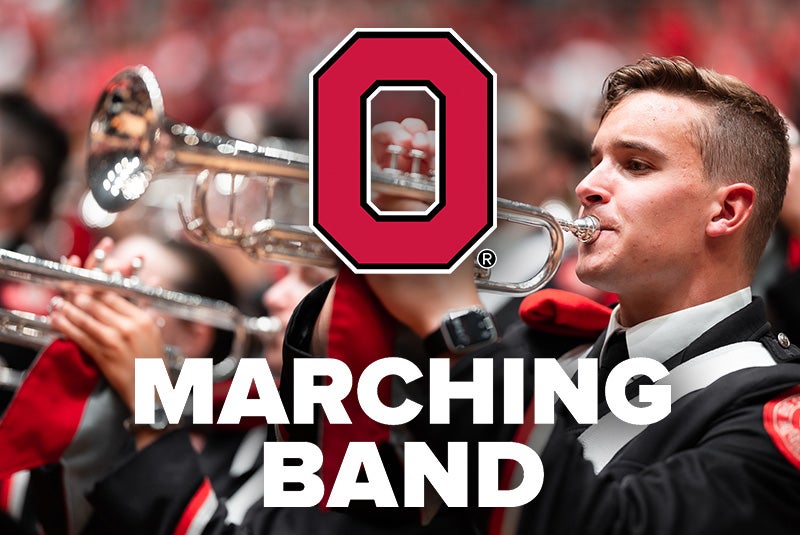Football Fridays have begun and marching bands from around the region are tuning up to deliver performances that complete the competitive nights under the storied lights. It is the dedicated efforts of the half-time heroes who endured band camp and hours of rehearsal to bring glory to the team and traditions that unite us. Perhaps the most famous marching band in Ohio knows a thing or two about how to get the hometown crowd on their feet. The Ohio State University Marching Band returns to The Niswonger on Wednesday, November 1 at 7:00 PM. A few tickets remain for this experience that brings the traditions of the Scarlet and Gray home to Van Wert.
One such tradition that will be experienced audibly opposed to visually from The Niswonger stage is the Script Ohio. This OSUMB spectacle was first performed on Oct. 10, 1936, and has become the quintessential formation of The Ohio State University Marching Band. While many point out that a similar formation of "Ohio" was performed by the University of Michigan Marching Band in 1932, it was not performed as the classic, constantly flowing script that has become the — literal — signature of The Ohio State University Marching Band.
Band Director Eugene J. Weigel based the looped “Ohio” script design on the marquee sign of the Loew’s Ohio Theatre in downtown Columbus and created the most identifiable trademark associated with Ohio State football and the Marching Band.
The script is an integrated series of evolutions and formations. The band first forms a triple-Block O formation, then slowly unwinds to form the famous letters while playing Robert Planquette’s "Le Régiment de Sambre et Meuse." The drum major leads the outside O into a peel-off movement around the curves of the script, with every musician in continual motion. Slowly the three blocks unfold into a long singular line which loops around, creating the OSUMB’s trademark.
Each time the band performs Script Ohio, a different fourth- or fifth-year sousaphone player is chosen to stand as the dot in the “i” of “Ohio.” Because the Script Ohio formation was one of many new formations included by director Weigel, no extra emphasis was placed on the dotting. Originally, an E-flat cornet player, John Brungart, was the first “i”-dotter, but in the fall of 1937, Weigel turned to Glen Johnson, a sousaphone player, and had him take his place in the dot. A year later, when the drum major arrived at the top of the “i” three or four measures too early, Johnson turned and bowed to the crowd to use up the rest of the music. The crowd roared, and the bow has been part of the show since then.
Today, toward the end of the formation, drum major and the “i”-dotter high-five each other. Then with 16 measures to go in the song, they strut to the top of the “i.” When they arrive, the drum major points to the spot, and the “i”-dotter turns and bows deeply to both sides of the stadium.
On very rare occasions, exceptional non-band members are offered the invitation to be an honorary i-dotter in recognition of their service to Ohio State and to the band. Previous honorary i-dotters have included comedian Bob Hope (1978), former Ohio State coach Woody Hayes (1983), golfer Jack Nicklaus (2006), Sen. John and Annie Glenn (2009), retiring Marching Band director Jon R. Woods (2011) and former Ohio State football coach Earle Bruce, who dotted the "i" on Oct. 1, 2016, and said, "I think this is the greatest honor I've ever received." The most recent honorary i-dotter was 100-year-old Anthony Violi, an alumnus who dotted on Sept. 22, 2018, during the Alumni Reunion game against Tulane.
For those of you who bleed scarlet and grey and those who do not, you won't want to miss this opportunity to hear the bodacious brass command the auditorium with an unparalleled class. The Best D@mn Band In The Land will make their way to Van Wert and play to a house of 1200 as opposed to 102,000. So if you need a pick me up and your smile is feeling droopy, get your ticket for November 1 and start singing Hang On Sloopy.
